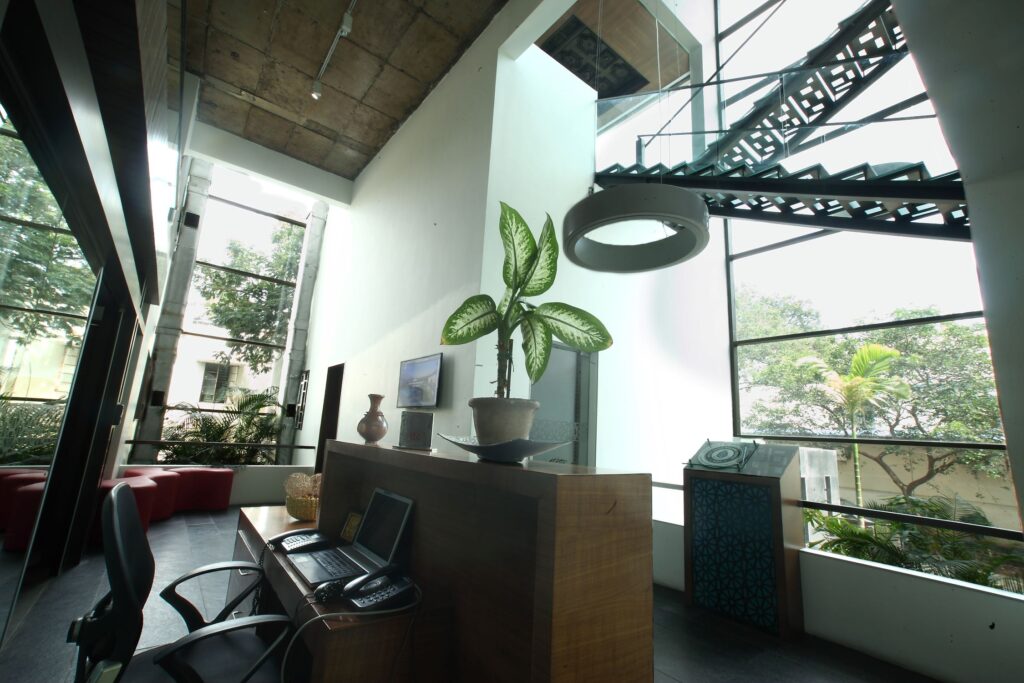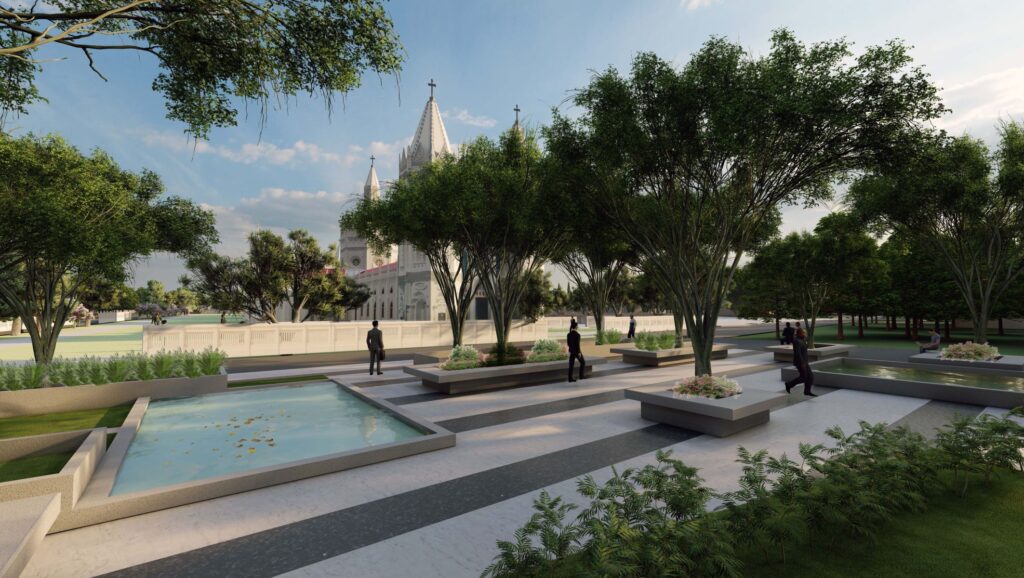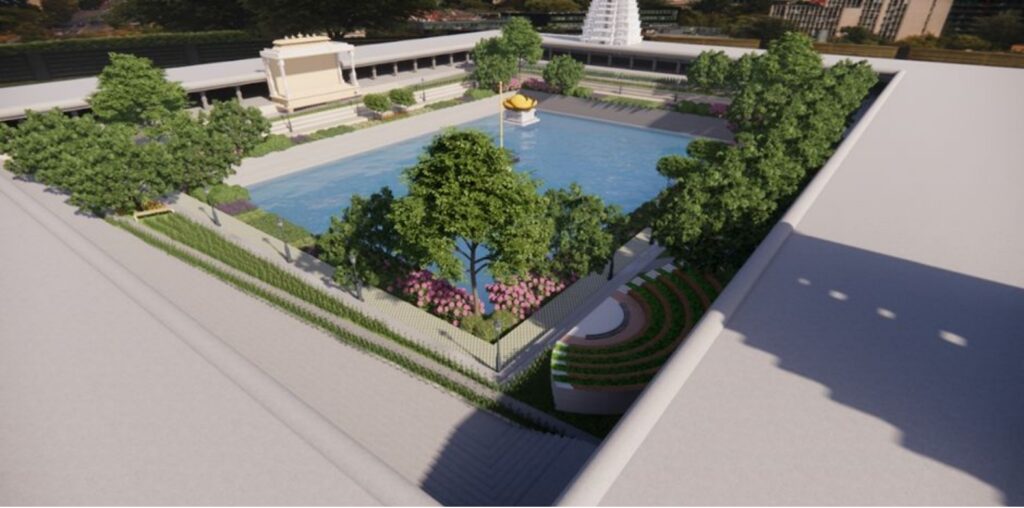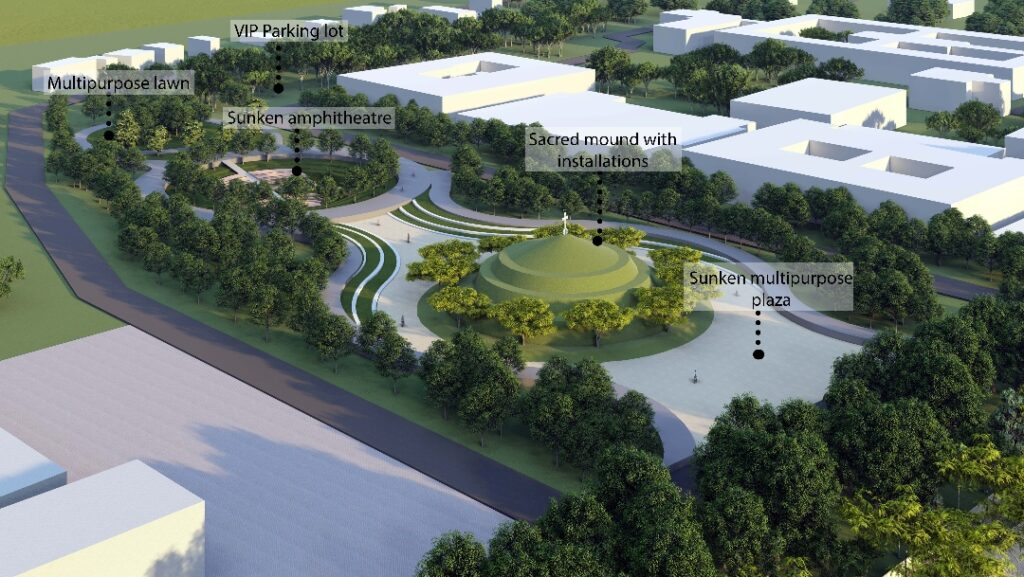In today’s era, as climate change becomes an undeniable reality, sustainability has emerged as a crucial concern across various disciplines. Built spaces are the first and most essential forms of shelter and are one of the largest carbon emitters.
The sustainability expert has emerged as an important stakeholder in the building and construction industry. Architects and builders strive for sustainability ratings, which often serve as badges of honour and essential marketing tools that resonate with discerning buyers. Initially, developers resisted building green due to perceived costs, but now sustainability is seen as a luxury.
This article, featuring insights from Pavitra Sriprakash, Chief Designer and Director of Shilpa Architects and Samhita Madanagobalane, founder of Ela Green Consultants, explores their journey from a time when sustainability was an afterthought and had to be pitched to clients to its current importance as a fundamental aspect of architectural design from the very beginning. In doing so, it underscores the role collaboration plays in integrating sustainability practices in architectural design.
Practices of Shilpa Architects and Ela Green Consultants
Shilpa Architects is a multi-disciplinary architectural and design practice started in 1979 by Sheila Sri Prakash in Chennai. It is the first firm in India to be started by a woman at a time when there were not many women architects, and today has grown to be a practice with projects all over the world. While they have coordinators and consultants on specific sites, their head office is in Chennai and another office in Hyderabad.
Starting as a very small practice—from designing family homes, factories, and schools—they have grown over four and a half decades to undertaking a diverse range of projects. With architecture as their mainstay, master planning and urban design are the largest scale of work they do, with some interior design projects. With over 70 people in the team, Pavitra shares, “We are a mid-sized boutique firm.”
She further explains that they received significant support from corporate clients like Mahindra, who were among the pioneers in adopting sustainability as a core agenda and pushing for certifications such as the LEED rating system. Due to Shilpa Architects’ already strong reputation in the sustainability market, many sustainability-focused projects naturally came to them.
Pavitra also highlights that she was one of the few LEED Accredited Professionals (LEED APs) to return from the US with sustainability-focused qualifications in the mid-to-late 2000s. The firm’s strong foothold in sustainability is attributed to the founder, Sheila Sri Prakash, whose active participation in global sustainability discussions and representation of India at platforms like the United Nations and the World Economic Forum have ingrained sustainability into the firm’s ethos from the outset.
Ela Green Consultants was founded in 2009 by Samhita Madanagobalane, a trained architect who is an early starter in the sustainability space. Prior to founding Ela Green, Samhita worked with Ashok Leyland and the Confederation of Indian Industry’s Green Business Centre in Hyderabad and contributed to writing the green homes code as early as 2007. She notes, “While climate-responsive design sustainability has been practised for many years, a more scientific approach to it in terms of using design tools to verify various measures of green and performance indicators of environmental sustainability is relatively new and started in the early 2000s.”
Her journey began at a time when performance indicators for sustainability were a new concept, requiring efforts to persuade clients of the benefits of going green. Today, the market has progressed significantly, recognizing that adopting sustainable practices is not only environmentally responsible but also makes business sense.
Designing the Office of Shilpa Architects
Both Pavitra and Samhita emphasize collaboration as a key value in their work. One of the first projects they worked on together was the office of Shilpa Architects, built in 2013. This building is one of the first few platinum-certified buildings in Chennai. Pavitra elaborates, “We wanted to get the highest possible rating for our space, and it was also a proving ground for us to quantify previously unquantifiable aspects.” Samhita explains that this partnership provided the flexibility to explore innovative methods for reaching sustainability goals and that the rating systems offered a framework to guide and evaluate their progress towards greener practices.
Pavitra emphasizes that a core part of the studio’s philosophy on sustainability is being rooted in the context of India, which they refer to as “Indo-centric sustainability,” which means being local and implementing principles that work from a geo-cultural perspective. They worked with local materials that do not require export or have a huge embodied energy or large carbon footprint for transportation, considerations of placement of windows as per heat and wind directions, etc. Renewable materials were used; furniture was made from bagasse board. Systems like a hybrid air conditioning system that works on envelope chilling as well as space chilling were also implemented.


© ArchitectureLive!
© ArchitectureLive!
Recent Projects: Chennai International Centre and Climate Study of Religious Sites
Shilpa Architects and Ela Green Consultants are currently working on the Chennai International Centre, a philanthropic effort for the city. The project was awarded after a closed-invitation-only competition was completed. Their initial concept submissions reflect their collaborative approach.
Unlike the usual practice where sustainability consultants come later in the design process, Samhita was part of the team presenting the original ideas for the Chennai International Centre. This showed the seamless levels of sustainability thinking that are interwoven into the practice of Shilpa and Ela.
Another factor that contributed to winning the bid for this competition was their careful consideration of a banyan tree on the site. They ensured it was celebrated, making it a key design element to be protected and ensuring that it continues to grow. Samhita highlights that their value addition at the design stage involves multiple iterations and cost-effective solutions. For this project, Pavitra shared almost 18 different wall sections with the Ela Green consultants, leading to extensive back-and-forth discussions. Pavitra notes that this level of detailed collaboration is rare.

Another key project they have worked on recently is a climate study of two religious sites in Tamil Nadu: Meenakshi Temple in Madurai and Velankanni Church. This exercise was crucial because such monuments typically do not have detailed surveys and maps and have undergone several retrofits over the years.
For Velankanni, close to the coast and prone to cyclones, the goal was to build a climate-responsive and comfortable user experience. This included shading and understanding where there was a lot of paving, especially as there is a 750-metre path where the pilgrims are required to crawl on their knees and these pilgrims are typically older people.
The mapping exercise helped understand how much green cover would help the microclimatic conditions. The energy audit conducted by Samhita’s team included placing fixtures like fans and solar energy considerations. One of the features they have proposed in the Velankanni Church is a French formal garden, as the church is inspired by French-style architecture. Done over eight months, the resulting report serves as a toolkit for the government and church and temple committees on implementing quantified approaches to improve these sites.



Implementing Sustainability-Driven Strategies
The sustainability vision of any project, across different typologies, comes down to minimising resource usage and carbon footprint and maximising occupant comfort, as shared by Samhita. However, this approach manifests differently for various types of commercial buildings, like data centres, BPOs, and office spaces.
In commercial buildings requiring 24×7 air conditioning, the focus is on enhancing performance while keeping the client’s budget in mind. In residential spaces, the usage pattern is different, with an emphasis on achieving thermal comfort without mechanical systems. The Bureau of Energy Efficiency has launched separate energy codes for residential and commercial buildings to address these differences.
Pavitra shares, “The joke between us is that never will we use low-energy-performance glass. It has to be clear glass because if you’re putting glass, it’s intentional. It’s for you to be able to look out and for it to be beautiful.”
Other challenges include managing shading elements, considering materials (for instance, high-rise residential concrete constructions are not ideal as concrete retains a lot of heat and is not good for thermal comfort), insulation properties, ventilation, daylighting, balance of open spaces, and saving trees, as demonstrated by their competition-winning design for the Chennai International Centre, which celebrated a banyan tree.
The recruitment practices of both Shilpa Architects and Ela Green Consultants underscore their commitment to sustainability. Ela Green Consultants integrates disciplines across building design and environmental studies into their team, such as facility management, environmental engineering, environmental studies, and architects with advanced degrees in sustainable architecture. At Shilpa Architects, Pavitra emphasises sustainability in interviews, ensuring that even junior architect candidates are well-versed in sustainable practices.
Future of Sustainable Action
Samhita notes that today the key stakeholder driving sustainable action is the policy-maker. The government is another key collaborator—states are in the process of implementing different codes; states like Tamil Nadu have a climate change mission under the Environment & Forest Department. She further shares that sustainability is driven by all stakeholders involved—civil engineers, contractors, landscape consultants, interior designers, along with MEP (mechanical, electrical, and plumbing) consultants. She highlights that at a design level, the architect shapes the agenda by driving design priorities around material choices and the placement of elements; the sustainability consultant’s role remains non-negotiable, ensuring that technical and environmental considerations are integrated into the process.
According to Pavitra, the journey of sustainability is evident from their first project, which was for their own office, to their latest project involving government religious sites that attract millions of visitors daily. She recalls Bill Clinton’s insight during the Chicago Green Build Summit that the green movement will take off when children teach their parents about sustainability. Further sharing that the knowledge of sustainability must reach the key decision-makers at home for real change to happen, she emphasises a push for sustainability from both the bottom-up and top-down.
Shilpa Architects and Ela Green Consultants exemplify how sustainability can be integrated into architectural design from the very beginning. Their approach emphasises collaboration and is rooted in contextually appropriate practices and innovative solutions, setting a benchmark for the industry.




